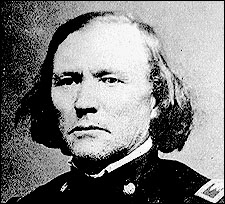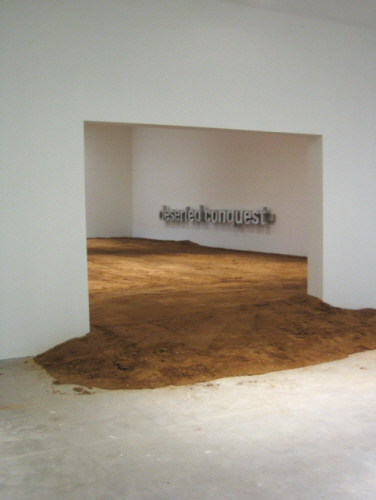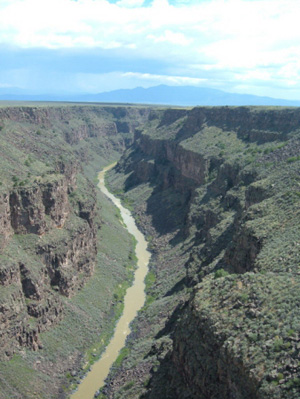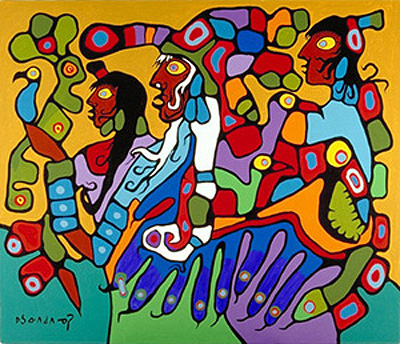I just got back from a two week road-trip to my beloved Rocky Mountain homeland. It was a belated honeymoon for my wife and me; we got married six months ago at Chinati Hot Springs, near the Rio Grande south of Marfa, but hadn’t since had the chance to get away. With unintended poetry, on this trip we camped near that great river’s headwaters (and elsewhere) in Colorado, and followed its course south for days, staying in Taos and Santa Fe before hustling back to responsibilities (and excruciating temperatures) here in the Big D.
While in Taos, in a bookstore on the famed central plaza, I picked up “Blood & Thunder,”
a balanced and compulsively readable account of the United States
conquest of the American West. It lent insight and poignancy to the
vast landscapes we so rapidly and easily cruised across. The story
revolves around Kit Carson, the quintessential mountainman and legendary explorer, who was at the
heart of nearly every significant chapter in the often tragic and
nearly always brutal saga of the defeat of, first Mexico, and
subsequently the myriad native people’s that all occupied this
continent for centuries before paler faces arrived on bone-grinding
wheels of “Manifest Destiny.”
I grew up on
a street called Kit Carson, and I’ve climbed around the shoulders of
Kit Carson Peak in the southern Rockies, but was at best only dimly
aware of who this extraordinary man really was. A
soft-spoken, humble Missourian, only 5’4” and illiterate, Carson was
liked by nearly everyone who knew him, white, Hispanic, and Indian
alike.  He
He
was also a natural-born killer who owned slaves and was capable of the
most heinous acts; truly evil deeds that were in turn matched (and in
the end perhaps overshadowed) by equally gracious and noble ones. But
then, reading this account, no one’s hands seemed clean of blood, save
the women and children on all sides who were starved, raped,
slaughtered, enslaved, or otherwise ground between the relentless
mortar and pestle of history and war.
A decade ago
I spent a magical, inspiring, heartbreaking, scary, and profoundly
educational year among the Dineh (or Navajo) who feature large in the
book. I carry that time in my heart, and the people I knew there.
Returning close to their once original lands, and the land of my birth,
to these places where I feel closest and most at home, lent some
perspective in evaluating what truly matters. I needed a hit of this
clarity, as I imagine we all do periodically.
Making art,
this vocation that obsesses and fascinates many of us, should ever be a
spiraling motion toward or from the heart; Jung described
“individuation,” or the human psyche’s process of integrating and
evolving, as like a wild animal slowly circling and warily drawn toward
a central fire. Or that’s how I remember his image. Venturing to sound
wildly “uncritical,” I think this is the process that art really
reflects, or should. It is material evidence of soul work, in the
broadest sense.
On this trip
Raychael and I engaged in our favorite soulful activities. We wined, we
dined, we camped deep woods, and stayed in quaint cabins and casitas
(and a shitty motel or two); we drove and talked hour after hour,
across what are to my mind the most beautiful landscapes on earth; and
we went to no fewer than three remote mountain/desert mineral hot
springs (nothing like soaking in water hot from recent proximity to the
earth’s molten core.) I dragged Ray to a Hindu temple I’m fond of, and a remote Tibetan Buddhist stupa
high in the Sangre de Christos (she bemusedly consents to these sorts
of things; but then, she adventurously dragged us to a “naturist” hot
springs, so we’re even. WAY too many naked, overly tanned,50-something
hippies for my comfort. Moral of story: Gravity’s a killer.)
We also saw some art.
Most of it,
unsurprisingly, was pretty rough. You have to just give a pass to small
town main streets whose merchants rely on 3 months of tourist traffic
to get them through the rest of the year – though I still find much of
that stuff a sort of aesthetic freak show. Rote, fluorescent landscapes
that would make Bob Ross fluster; larger-than-life-size welded steel
nudes with huge knockers doing yoga; Dale Chihuly knock-offs so
graceless and lumpen you wonder who in their right mind would produce
and try to sell them, much less purchase the stuff and be condemned to
live with it; and pin-headed, blobular figures of all kinds, pierced
with random holes, as if a mauve horse and Indian maiden given the 5th
generation Henry Moore treatment equates to contemporaneity. It’s not
folk art, its not craft, its not “real” art – though knowingly crap
aesthetics are all the vogue. These are products that resist neat
interpretation, providing fodder for endless art historical
speculation: like, what process produced this thing, how did this
particular object get asserted as “art” at this time and place, by and
for whom (the general ground rules of the post-modern game, I
suppose…)
We got to
Taos, and despite its storied artistic past, many previous trips had
disabused me of much hope to see anything all that compelling – though
I do love a well made Indian pot or carving, and all that chunky
turquoise/silver jewelry. Through a front window, Raychael surprisingly
spotted an extraordinary large canvas in the back of a gallery. We
ventured in, past wolves on black velvet and deer-skin drums, and there
was this great painting: strange birds, beasts, and other
unidentifiable creatures in unmediated bright blues, greens, and
orange, obviously inspired by Native American myth and tropically
Eskimo-like, but singularly original and well conceived. It radiated
some kind of elusive power and we stood transfixed for some minutes
before escaping any kind of hard sell. The artist remained unknown to
us.
Next stop was
Santa Fe, and despite seconding only NYC for gallery count, our
expectations weren’t much higher. We stayed a block from Site Santa Fe
, and beyond that didn’t expect to see anything else we particularly
vibed with. I’m no snob – no, really – and my basic contention is
always that there are relative levels of art production, disparate
targeted zones of commerce and intent, and one can’t use the same
yardstick for them all. In any gallery or shop, it’s not hard to find
things that you can appreciate (in Dumas, Texas, [pron. doo'-muss,
ya'll] at the visitor center off the highway, the extremely gracious
guide showed us some prints by a young, self-taught local artist that
were impressively accomplished: still-lives of south-western
accoutrement that I could happily live with.)
And frankly,
I think it would be good for many “professionals” ensconced in the High
Art world to get deep into the hinterlands more to readjust their sites
a bit. While maybe its always been like this (substituting one ruling
class for another,) there is a great divide, echoing the widening gap
between rich and poor in our country, from the halls of Chelsea and
life on Main St. Though of course Main St. is no more; insert
“Walmart.” I started to get nervous if we went 3 hours without seeing
one (it seemed we were often in need of more tent stakes, or Coleman
fuel, or fishing line,) the way urbanites need a Starbucks every
blockor two just for reassurance. BTW, jonesing for decent java, I
looked for a Starbucks once or twice – they’re thankfully still pretty
rare in rural America. Though I could have used some better coffee
occasionally.
Anyway, back
to Santa Fe. Austrian Hans Schabus had Site Santa Fe to himself, and
he’s deconstructed a doublewide and set it up like so many paintings,
or propped-up, modular Matta-Clarks; he filled another gallery with
desert dirt, with some cheesy text on the wall.  I
I
think it would have looked impressive in Germany, but I had three dogs
in the car and my own shoes already covered in that same gritty soil,
and I had just visited my dad who lives in a desert trailer up in
Colorado (and my Navajo friends mostly lived in them,) so the novelty
factor was at far remove. Another Smithson-y gallery with high-lighted
road maps again looked all too similar to the stuff on my dash.The
video gallery worked best – stationary shots of a ghost town, with the
obligatory train rattling and blaring through the parched landscape,
projected on three walls. I liked the show alright, but it felt very
tourist-y to me, kind of exploitative; symbolic of a sort of aesthetic
globalization, the artist humorlessly toying with the (to him) novel
mythic tropes of the Wild West,without a deeper relationship developed
over time (interviews with him read later confirmed this suspicion.)
We then hit the Georgia O’Keefe Museum,
an artist who certainly didn’t suffer from lack of intimacy with her
subjects or place. But the show had an unfortunate, semi-specious
theme: “Circling Abstraction.” You can guess: basically it was all
roundish O’Keefe motifs. I personally find her really hit and miss, and
many of the misses simply suffer from the kind of noodly loopiness that
was featured here. I hold her personally responsible for a lot of the
bad, brightly-colored abstract art that abounds in the Southwest, and
elsewhere. She was one hell of a character (as featured in dozens of
displayed photographs, eternally perpetuating the cult of Georgia) but
really, I can live without seeing any more pink-white-and-blue,
pelvic-bone-hole paintings. However, a tiny image of a fig, maybe 8”
square in a simple gilt silver frame, stole the show, and stuck with me.
The next day we stumbled upon the Institute of American Indian Arts , across the street from the St. Francis Cathedral, and who was featured but the painter who’s work had gripped us up in Taos two days earlier! We now learned his name – Norval Morrisseau,
a 75 year-old Canadian/Anishinabe painter and shaman, in his US museum
debut. He’s apparently lived a tough life (echoing the lives of many of
his people,) with his current fame not easily won. On display are 40 or
so works spanning 40 years. This was simply the most satisfying and
pleasant artistic discovery of my year. He had been vaguely familiar to
me, but he has been immensely influential for generations of Native
American artists north and south of the border.
This is art
acting as nothing short of spiritual/physical/social medicine, function
and form art-fully united. The medium is the message, but not
necessarily in Mcluhan’s sense; rather, in if the work has apparent
heart, legs, and bones, it is reflecting the active spirit-ed process
of creative engagement with heart, mind, life, cosmos, and culture. May
we all find such connectivity, however hard won. Without resorting to
gimmicks or “ironic materials”, Morrisseau weaves the apparently
incongruous strands of his existence together into images that are
often simply uncannily, unapologetically beautiful – and vaguely
terrifying. So encounters with the Unseen often seem. I left Santa Fe
with Morrisseau’s work acting as a new touchstone to refer my own
process, with hope that we can all continue to find (and be) artists
whose work sings with such luminous authenticity (yes,that discounted
commodity) and sly directness.





